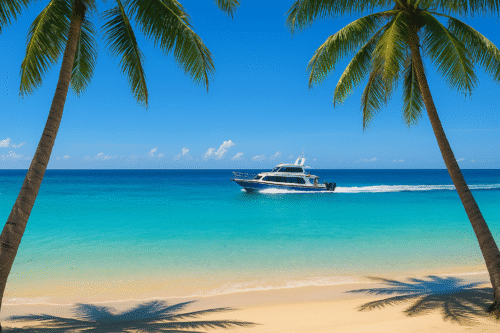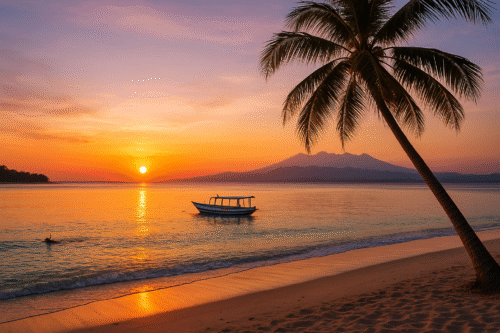The Gili Islands – Gili Trawangan, Gili Meno and Gili Air – are surrounded mostly by calm, shallow water protected by coral reefs. Because of this, they are not a major surfing destination like Bali or Lombok. However, there are a few surfable breaks around the islands that appeal to adventurous surfers looking for uncrowded waves and a relaxed setting.
Surf Conditions
The Gilis sit in the Lombok Strait, where the ocean is generally calmer. Most beaches are sandy and sheltered, making them ideal for swimming and snorkeling but not for big waves. Surfing here depends on the right tides, swells and winds. The waves are usually small to medium-sized reef breaks, best suited for intermediate surfers who are confident riding over coral reefs.
The best season for surfable waves is typically May to October, during the dry season when southern swells reach the islands. Waves are most consistent at mid to high tide. Beginners should be cautious because the reefs can be shallow and sharp.
Main Surf Spots
Gili Trawangan is the only island with a known surf break. It is found off the south-east coast near the main strip and works during the right tide and swell direction, producing fast left-hand reef waves. There are no official surf schools on the island, so surfers usually bring or rent boards and enter the water themselves.
Gili Air occasionally gets small rideable waves on the south-east and eastern sides, but conditions are less reliable and mostly suit longboards when the swell picks up.
Gili Meno does not have a recognised surf spot; its beaches are better for swimming and snorkeling.
For more powerful and consistent surf, many travellers use the Gilis as a base and take a boat trip to nearby Lombok’s west-coast surf spots such as Desert Point (Bangko-Bangko) or Senggigi, which are well-known among experienced surfers.
Board Rentals and Lessons
Board rental options on the Gilis are limited and usually provided by small beachside shops or dive-surf hybrid operators on Gili Trawangan. Equipment choice may be basic, so experienced surfers often prefer to bring their own boards. There are no dedicated surf schools or lifeguard-supervised breaks on the islands, so beginners should either practise elsewhere or take lessons on Bali or Lombok before attempting the reefs here.
Safety Tips
Because most breaks are over shallow coral reef, wearing reef-safe booties is highly recommended. Always check tides, weather and currents before paddling out, and avoid surfing alone in unfamiliar spots. Respect local fishermen and boat lanes, as some areas near the reef are also used by small fishing boats.
Surfing on the Gili Islands is possible but limited to a few reef breaks suitable mainly for intermediate surfers. Travellers looking for world-class waves will find better conditions in Bali or on Lombok’s south and west coasts. Still, for those staying on the Gilis who want to catch a few fun waves away from crowds, Gili Trawangan offers a unique and quiet experience when the swell is right.






